University of Connecticut – Innovation Partnership Building
Storrs, Connecticut, United States

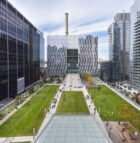

This bold contemporary addition offers more than expanded instructional space — it integrates the functions of the school into a unified urban campus, an academic “city within the city” in the heart of Manhattan.
John Jay College of Criminal Justice’s new building provides all the functions of a traditional college campus within a single city block. The 625,000-square-foot building doubles the size of John Jay’s existing facilities by adding classrooms, laboratories, auditoriums, faculty offices, and student lounges. The new building addresses the College’s need for instructional and social spaces and creates a unified academic presence for the institution.
John Jay College, part of the City University of New York since 1964, educates 15,000 students annually in emergency response, forensic psychology, and cyber security. Before the construction of the new building, the college was primarily located in Haaren Hall, an early-20th century building fronting 10th Avenue, and in North Hall, a former shoe factory on West 59th Street. The college had been steadily expanding for some time and, after the September 11th attacks on New York, enrollment increased dramatically to the point where the school outgrew its facilities. The new building is a critical component of John Jay’s growth and a symbol of its transformation into a senior college of The City University of New York system.
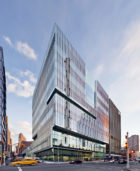
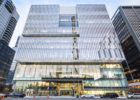
The new building consists of a four-story podium and a 14-story tower. The podium, which provides connections to Haaren Hall, contains dense social and academic programs and is topped by a 65,000-square-foot landscaped terrace that serves as a campus commons. The tower, known as “the cube,” contains faculty offices, academic quads, a conference center, and instructional laboratories. The scale of the new building is similar to its adjacent neighbors along 11th Avenue and provides a strong visual presence for the college from the West Side Highway.
A 500-foot-long, four-story cascade runs the length of the podium, organizing programs both horizontally and vertically. Beginning at the cafeteria level of the tower, the cascade descends with a series of grand staircases, escalators, and stepped amphitheater seating, culminating at the main student entrance on 59th Street and ultimately connecting to Haaren Hall. As the social spine of the campus, the cascade is programmed with open-plan lounges, study areas, and gathering spaces to maximize student interaction and activity.
The building is clad with aluminum panels and low-E coated insulated glass units. Framed glass setbacks placed at specialty spaces, including the cafeteria, research labs, the 250-seat classroom, and a lounge area off the social cascade, allow the building’s diverse programmatic functions to be visible from the exterior.
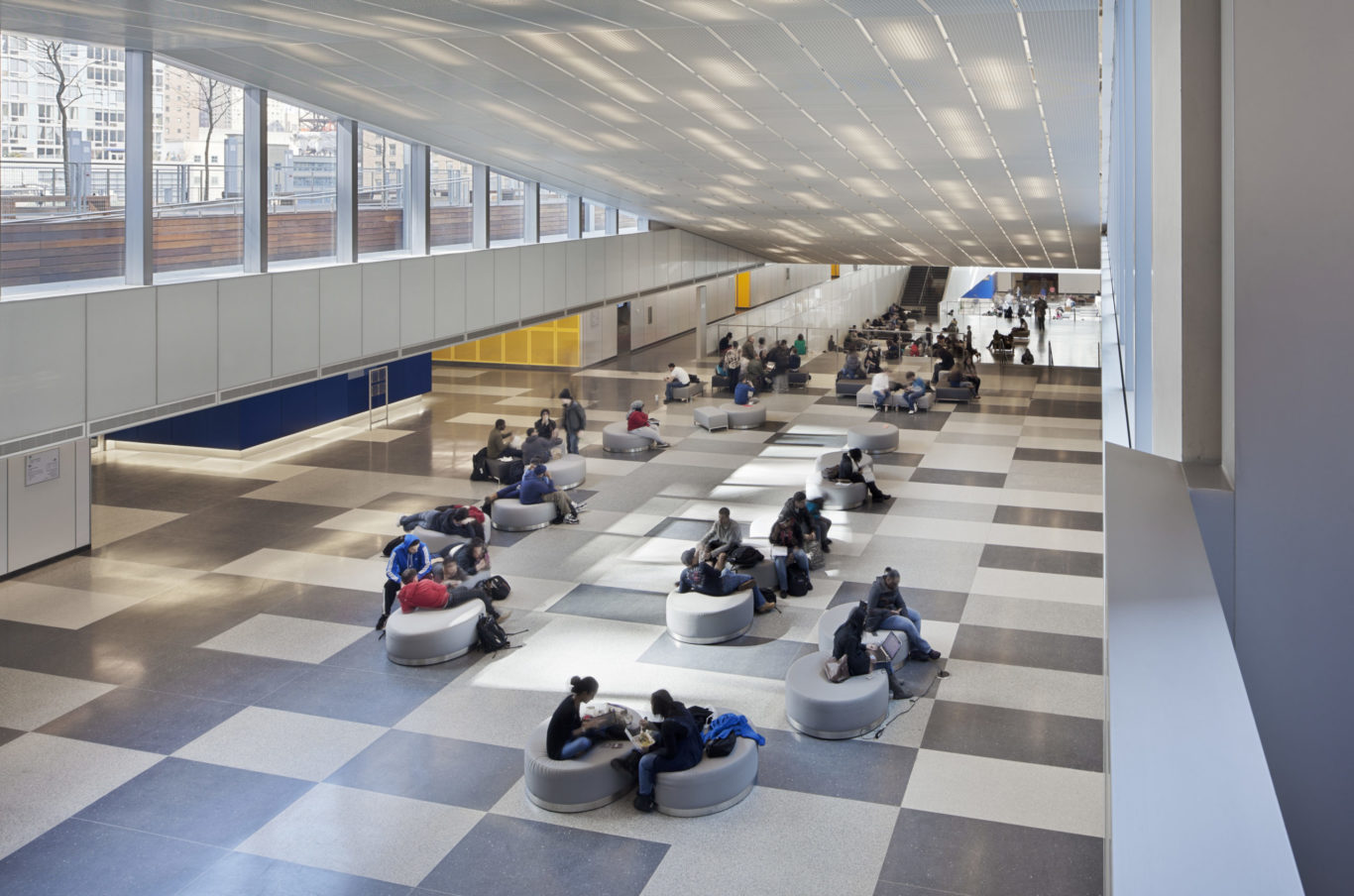
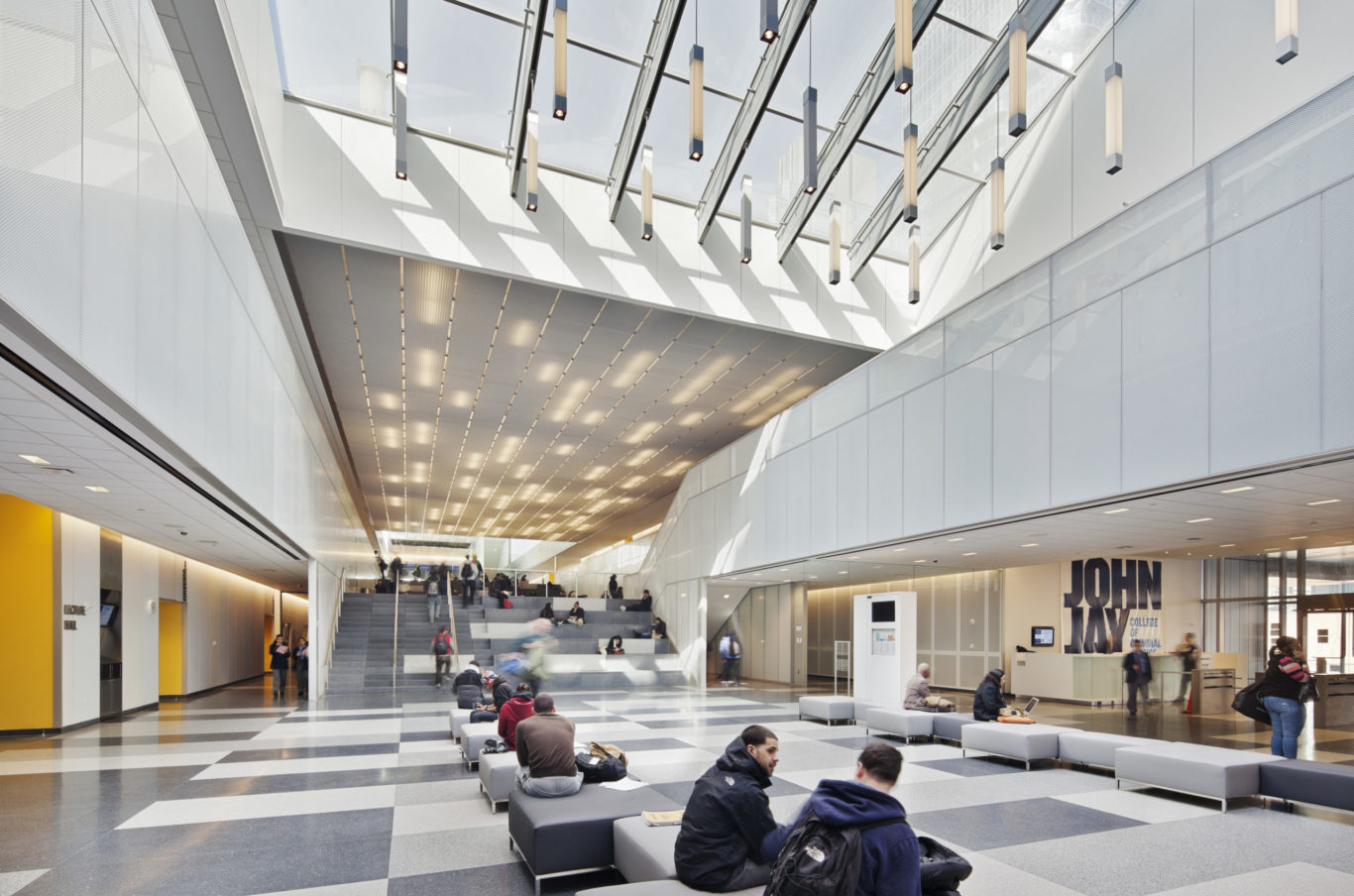
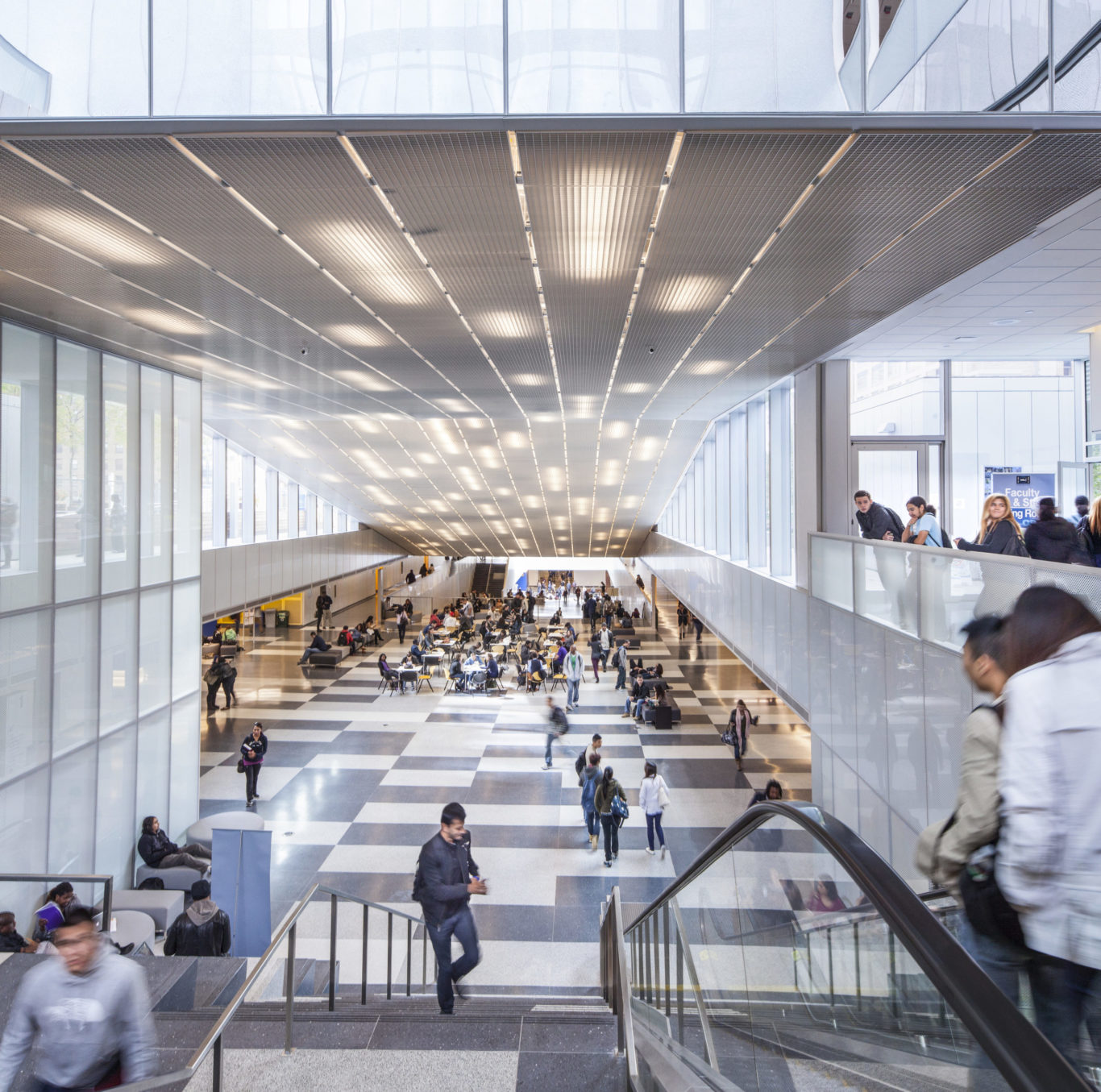
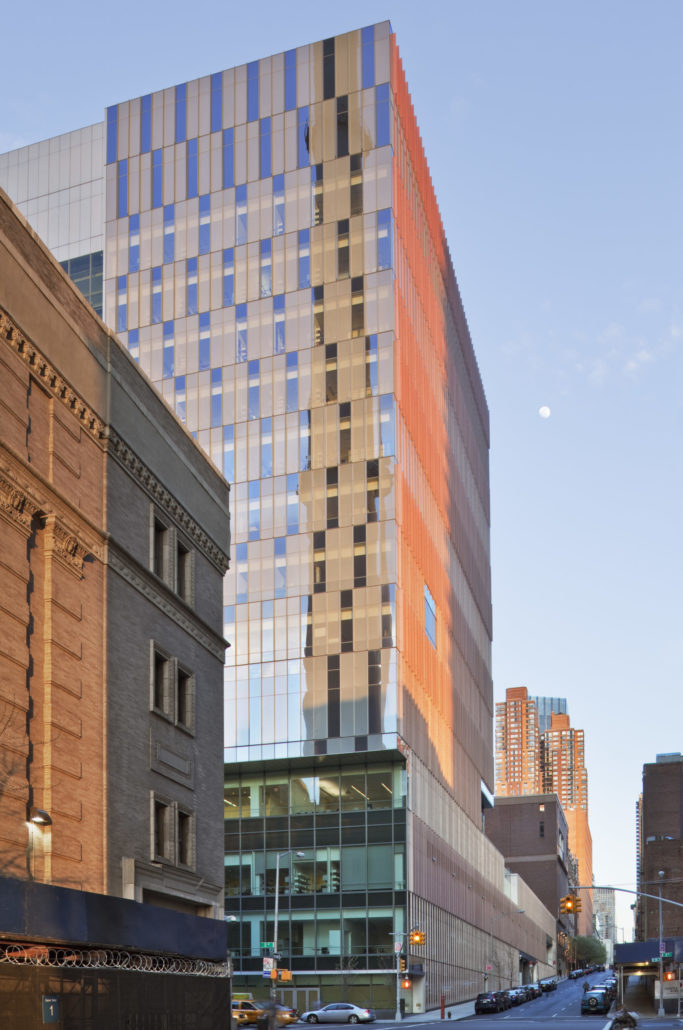
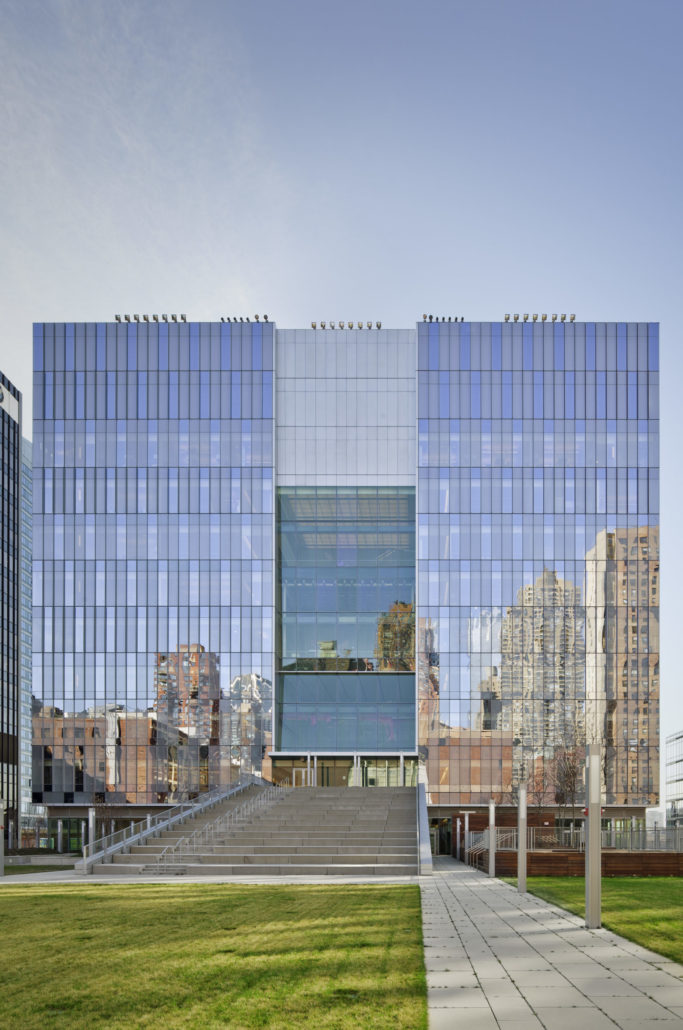
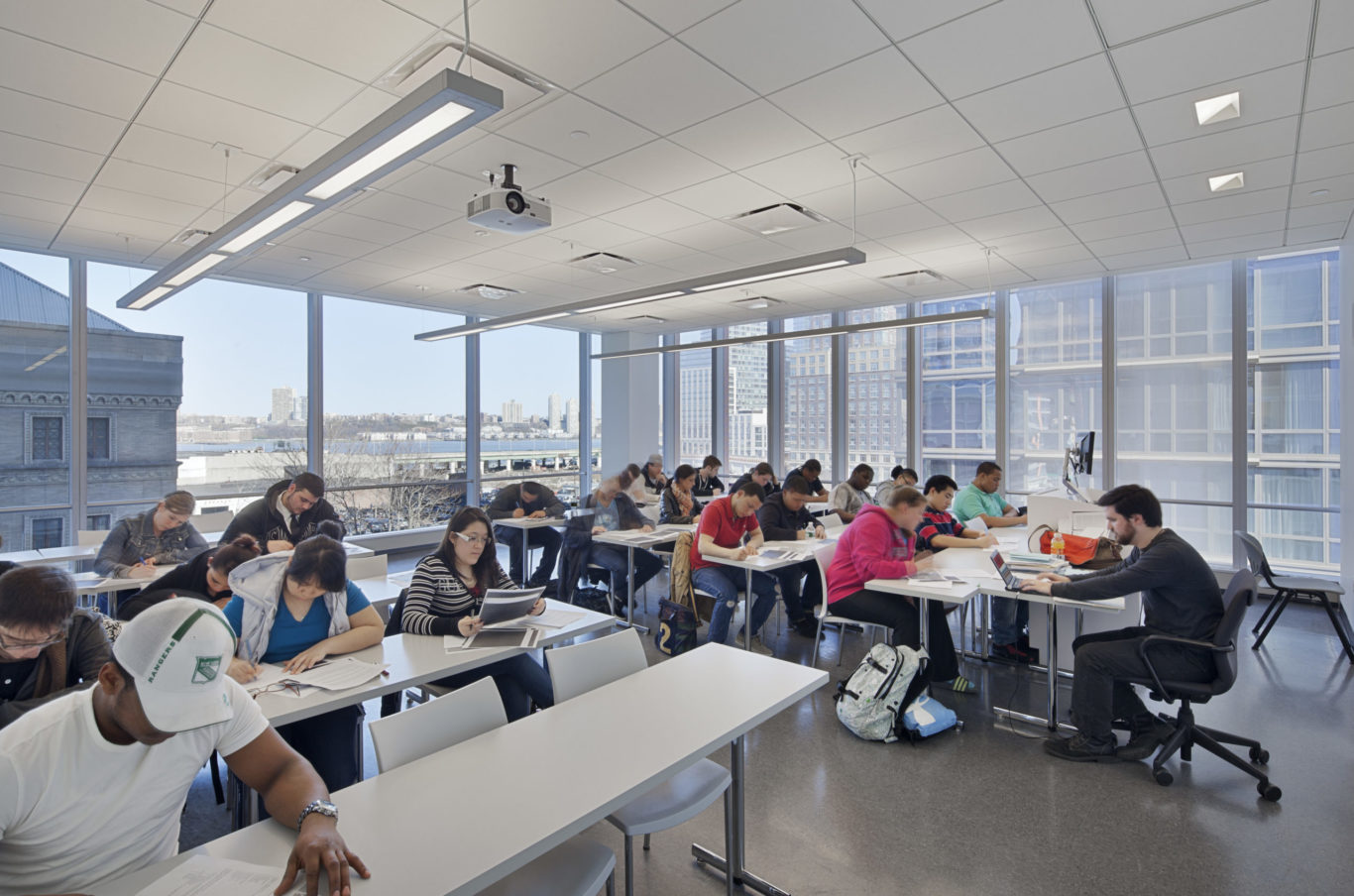
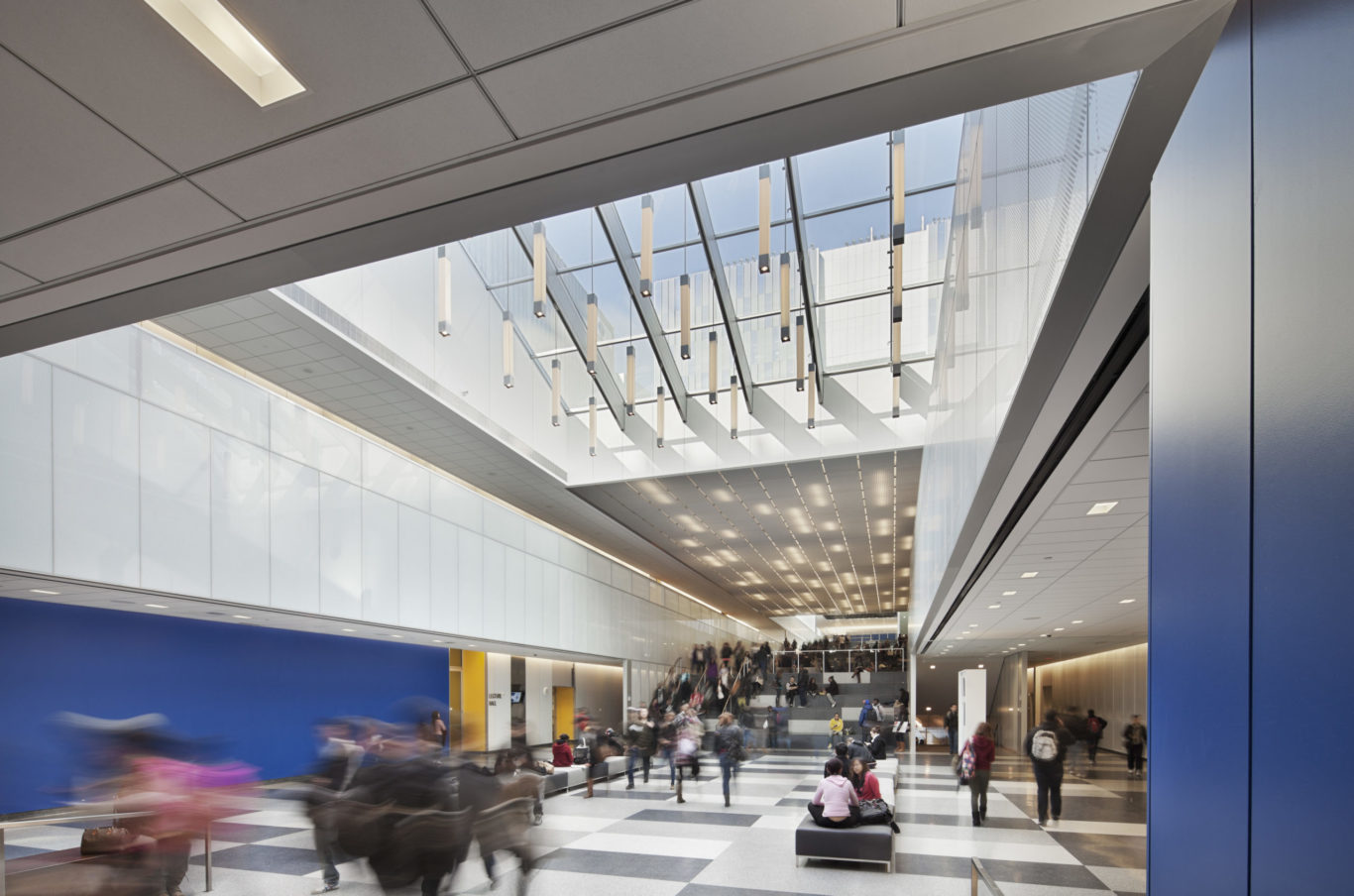
Storrs, Connecticut, United States
Chapel Hill, North Carolina, United States
La Jolla, California, United States
01/